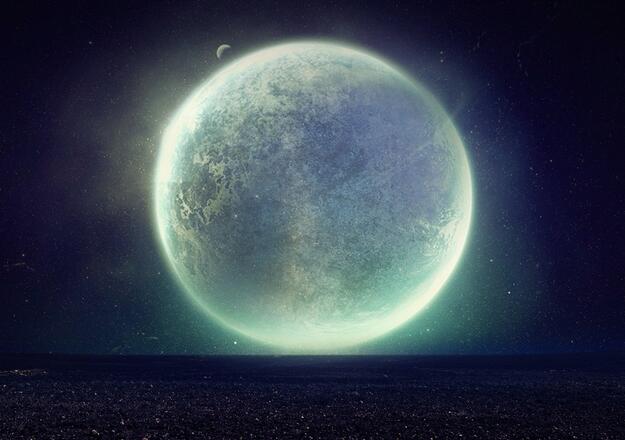It was he who coined the term "Big Bang," in a moment of facetiousness, for a radio broadcast in 1952. He pointed out that nothing in our understanding of physics could account for why everything, gathered to a point, would suddenly and dramatically begin to expand.
是他1952年在一篇广播稿中开玩笑地创造了大爆炸这个名字。他指出,我们在理解物理学的时候,怎么也解释不了为什么一切会聚合成一点,然后又突然戏剧性地开始膨胀。

Hoyle favored a steady-state theory in which the universe was constantly expanding and continually creating new matter as it went. Hoyle also realized that if stars imploded they would liberate huge amounts of heat—100 million degrees or more, enough to begin to generate the heavier elements in a process known as nucleosynthesis. In 1957, working with others, Hoyle showed how the heavier elements were formed in supernova explosions. For this work, W. A. Fowler, one of his collaborators, received a Nobel Prize. Hoyle, shamefully, did not.
霍伊尔赞成恒稳态学说,该学说认为宇宙在不断膨胀,在此过程中不断创造新的物质。霍伊尔还意识到,要是恒星发生爆聚,便会释放出大量热量--温度在1亿摄氏度以上,足以在被称之为核合成的过程中产生较重的元素。1957年,霍伊尔和别人一起,展示重元素是如何在超新星的爆炸中形成的。由于这项工作,他的合作者W.A.福勒获得了诺贝尔奖。霍伊尔则没有,很难为情。
According to Hoyle's theory, an exploding star would generate enough heat to create all the new elements and spray them into the cosmos where they would form gaseous clouds—the interstellar medium as it is known—that could eventually coalesce into new solar systems. With the new theories it became possible at last to construct plausible scenarios for how we got here. What we now think we know is this.
根据霍伊尔的理论,一颗爆炸中的恒星会释放出足够的热量来产生所有的新元素,并把它们洒在宇宙里。这些元素会形成气云--就是所谓的星际媒介--最终聚合成新的太阳系。有了这些理论,我们终于可以为我们怎么会来到这个世界的问题构筑一个貌似有理的设想。我们现在认为自己知道的情况如下。











